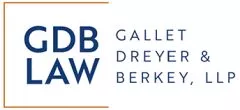The increase in flooding caused by severe weather changes has motivated our legislature to require landlords to disclose the flood history of residential property being leased to tenants. The term "flood," as used in the new law, means natural flood events such as heavy rainfall, coastal storm surges, tidal inundation, or river overflow.
On June 21, 2023, the New York State legislature amended the New York Real Property Law by adding a new section, Section 231-b. This new statute requires a landlord to attach a flood history and risk notice as a part of a residential lease. The notice must state: 1) whether all or any part of the leased premises is located in a Federal Emergency Management Agency ("FEMA") designated floodplain, 2) whether all or part of the leased premises is located in a Special Flood Hazard Area (a.k.a. a 100-year floodplain) and 3) whether all or any part of the leased premises is located in a Moderate Risk Flood Hazard Area (a.k.a. a 500-year floodplain). The areas that define a 100-year floodplain and a 500-year floodplain are found in FEMA's current Flood Insurance Rate Maps (https://msc.fema.gov/portal/advanceSearch).
In addition to the above notice, all residential leases must include the following language, "Flood insurance is available to renters through the Federal Emergency Management Agency's (FEMA's) National Flood Insurance Program (NFIP) to cover your personal property and contents in the event of a flood. A standard renter's insurance policy does not typically cover flood damage. You are encouraged to examine your policy to determine whether you are covered."
This new requirement permits renters and purchasers to make a more informed decision when choosing where to reside. New York's new law also requires that purchasers of real property be advised if the premises have experienced damage from flooding and the extent of those damages, along with whether the premises are likely to experience flooding in the future.
In order to ensure compliance with this new statue we recommend the following steps be taken by the Board of Directors of a Cooperative, Board of Managers of a Condominium (with respect to units leased by the Board or unit owners), their Managing Agents and individual landlords. First, perform a comprehensive review of the flood history of each apartment/unit, building, or home. Second, search the address of the property in FEMA's Flood Insurance Rate Maps to determine if it is located in a floodplain. Finally, attach a notice to every residential lease (the proprietary lease in a cooperative). If an apartment is subleased, we recommend that the flood disclosure notice be incorporated into a sublease. For cooperatives and condominiums, we recommend adoption of a new House Rule or Rule and Regulation that requires the flood disclosure notice on all subleases of cooperative apartments and leases of condominium units.
The content of this article is intended to provide a general guide to the subject matter. Specialist advice should be sought about your specific circumstances.


